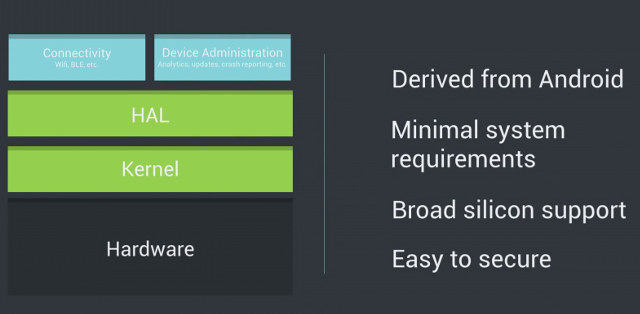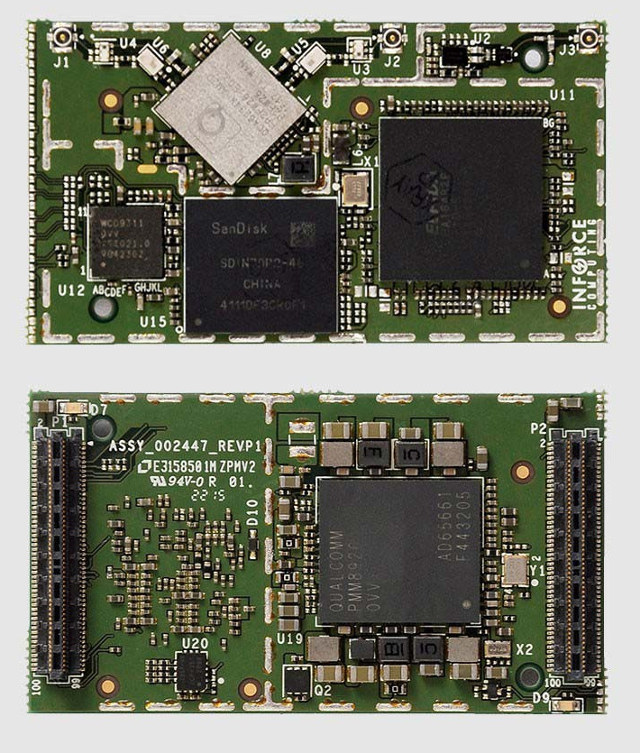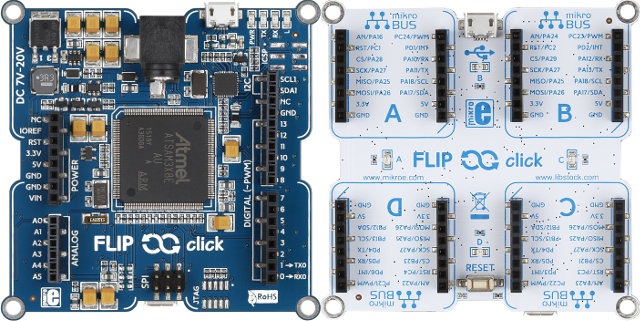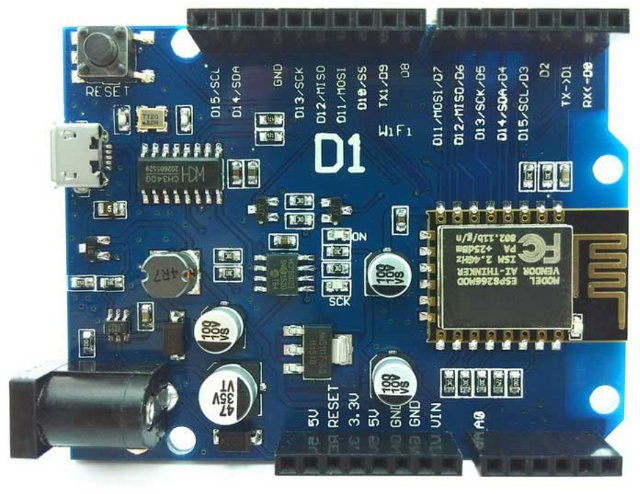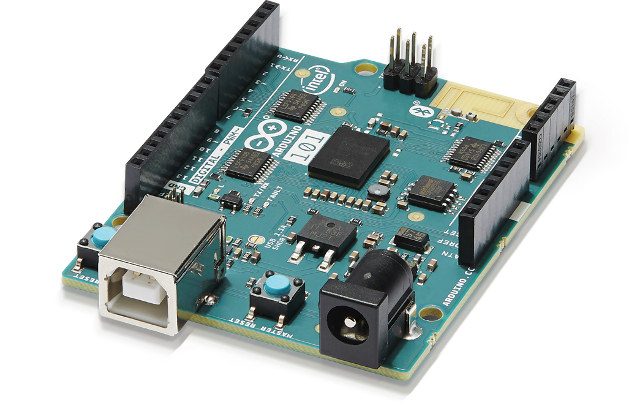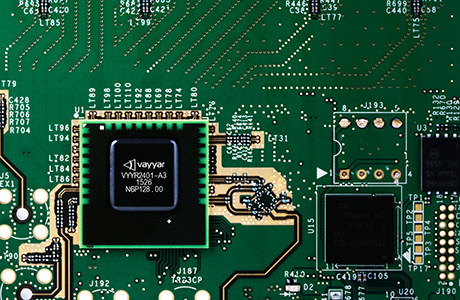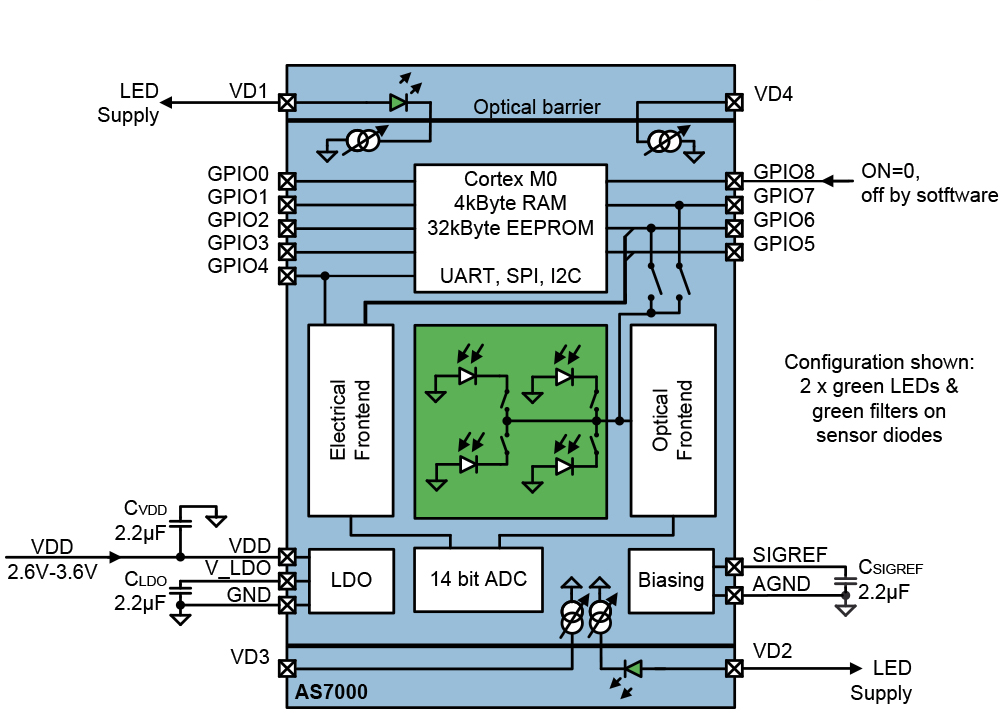DJI is known for their high-end drones such as Phantom 3 quadcopter, but the company has now launched Manifold mini PC powered by Nvidia Tegra K1 quad core Cortex A15 processor and running Ubuntu 14.04 in order to allow developers run their own applications performing complex computing tasks and advanced image processing “on the fly”. DJI Manifold specifications: SoC – Nvidia Tegra K1 quad core Cortex-A15 processor @ up to 2.2 GHz with 192-core Kepler GPU System Memory – 2GB DDR3L Storage – 16GB eMMC 4.51 flash, micro SD slot Video Output – mini HDMI port Audio I/O – mini HDMI, combo audio jack for microphone and headphone Connectivity – Gigabit Ethernet port USB – 2x USB 3.0 ports, 2x USB 2.0 host ports, 1x micro USB port (supports Force Recovery mode and Host mode) , and a non-standard USB 2.0 interface with the drone. Camera – Camera In and […]
Brillo Android based OS for IoT Projects Supports ARM, Intel and MIPS Platforms
You’d think there are already enough lightweight operating systems that could provide a good enough platform for IoT and embedded projects, but Google decided to make their own Brillo operating system for IoT, based on Android, most probably to leverage the existing Android tools, and make it easier for app developers to move to the Internet of Things space. Brillo ‘s hardware requirements are pretty low as the operating system can run on devices with 32MB of RAM, and 128MB of storage. Google will provide a complete ecosystem with an embedded OS, core services, and a developer kit with tools to build, test, and debug. Just like in Android, three architectures will be be officially supports, starting with the following hardware platforms: ARM – TechNexion Pico-i.MX6UL system-on-module based on Freescale i.MX6 UltraLite and Broadcom BCM4339 802.11ac + Bluetooth 4.0 wireless module, combined with PICO-DWARF baseboard. MIPS – Upcoming MIPS Creator […]
Inforce Computing 6401 Micro SOM is a Qualcomm Snapdragon 600 System-on-Module
Inforce Computing announced their 6501 Micro SOM system-on-module based on Qualcomm Snapdragon 805 processor in Q2 2015, and the company informed me that they had just unveiled a lower power version based on Snapdragon 600 processor called 6401 Micro SOM, and still featuring WiFi, Bluetooth 4.0, and GPS connectivity on module. Inforce 6401 Micro SOM: SoC – Qualcomm Snapdragon 600 (APQ8064) quad core Krait processor up to 1.7 GHz with Adreno 320 GPU, and Hexagon DSP v4 up to 500MHz System Memory – 2GB PoP LPDDR2 @533Mhz (Optional 3GB) Storage – 4GB eMMC v4.4.1/v4.5, with options up to 64GB Connectivity – BT 4.0 , dual band 802.11n/ac Wi-Fi (QCA6234), and GPS (WGR7640) with WiFi and GPS antennas on carrier board Peripherals and I/O via two 100-pin SoM connectors: Video / Display – 1x HDMI, 2x MIPI-DSI (4-lane) & touch screen Audio 4x Line out, 3x Mic-in, 1x headphone out 8-channel […]
Flip & Click Board with Atmel SAM3X8E MCU Features 4 mikroBUS Sockets & Arduino Headers
HummingBoard Gate introduced last month was the first board I saw with a mikroBUS socket that can be used with over 150 “Click boards” by MikroElektronika adding functionalities such as sensors, OLED displays, relays, servos, and so on. But if you project don’t quite need the power of a full featured Linux board, or you simply prefer working with the Arduino IDE, MikroElektronika has just launched Flip & Click board powered by an Atmel SAM3X8E Cortex-M3 micro-controller and featuring four mikroBUS sockets on the back of the board, as well as Arduino compatible headers on the top. Flip & Click board specifications: MCU – Atmel AT91SAM3X8E Cortex M3 micro-controller @ 84MHz with 512 KB flash, 100 KB SRAM (64+32+4), also used in Arduino Due. Expansions Headers Arduino UNO compatible headers on the top 4x mikroBUS socket on the bottom USB – micro USB port for programming and power Misc – […]
$9 ESP8266 D1 Board Features Arduino UNO Headers
We’ve already seen the Arduino IDE supports ESP8266(-EX) WiFi SoC, and some companies have designed Arduino shields for ESP8266 modules, but so far I had never seen an ESP8266 board with Arduino UNO form factor supporting Arduino shields, and that’s exactly what showed up in DX new arrivals RSS feed with a white label ESP-12E UNO board selling for $11.75 including shipping. The “D1” board has the following specifications: ESP8622 Module – AI-Thinker ESP12-E module (as found in NodeMCU) based on ESP8266-EX SoC @ 80 or 160 MHz with 4MB flash Connectivity – 802.11 b/g/n with PCB antenna. Supports station / softAP / SoftAP + station modes, WPA/WPA2 security. I/Os 11x Digital I/O pins 1x Analog Input pin I/O logic level: 3.3V ADC pin (A0) input voltage: 0-3.3V Debugging – Via micro USB using CH340G USB-TTL serial chip Misc – Reset button Power Supply – 6-24VDC via DC jack, 5V via […]
Arduino 101 Board Features Intel Curie Module, Bluetooth LE, and Sensors
I’ve recently learned that the battle between the two Arduino teams, namely Arduino SRL (arduino.org) in Italy, and Arduino LLC (arduino.cc) in the US, had taken another turn with Arduino LLC now branding their boards as Arduino in the US, and Genuino in the rest of the world. This may certainly bring confusion to new comers, especially as they have to deal with different version of the Arduino IDE. With that backdrop, Arduino LLC has now introduced Arduino 101 (aka Genuino 101) board powered by Intel Curie module with Quark SE x86 SoC with Bluetooth LE and a 6-axis combo sensor. Arduino 101 specifications: SoC – Intel Curie compute module including an Intel Quark SE x86 32-bit microcontroller @ 32 MHz and an a DSP sensor hub @ 32Mhz with 384 KB flash, 80 KB SRAM (24KB available for sketches), , Bluetooth LE, and 6-axis combo sensor with accelerometer and […]
Walabot MIMO Radar Board Can See Through Walls Thanks to Vayyar 3D Imaging Sensors
A few days ago, I wrote about Orbbec Astra 3D camera that can analyze distance and depth to form a 3D image of object. However, this solution uses an IR sensors, and while it can fulfill the needs of many application it does not allow to see through object, and that’s exactly what Walabot wideband MIMO radar board promises to do thanks to Vayyar 3D imaging sensor and a dozen of RF antennas. Some of the key features and preliminary specifications of Walabot board include: Vayyar VYYR2401 3D imaging sensor 12 (or is it 14?) non-contact antennas array system based on “Octopus A3 System on chip” Build in Tx/Rx linear polarized wide-band antennas from 3-10Ghz. On-board Cypress FX3 controller for communication and pre-processing EEPROM (for inventory and calibration information) Walabot interface connectors: Micro-USB 2.0 for high-rate data communication. Option to provide supply from USB. Single supply voltage 4.5-5.5v input for […]
AMS AS7000 Biosensor is Designed for Strapless Optical Heart Rate Monitors
Heart rate monitors (HRM) with chest straps are now being replaced by more comfortable strapless HRM, such as UWatch UX. These products are enabled by photoelectric sensors that sample light modulated by blood vessels, which expand and contract as blood pulses through them. One of such solutions is the recently introduced AMS AS7000 including a Cortex M0 core, and a DSP implementing algorithm to process raw photoplethysmography (PPG) readings from the sensors to convert them into digital HRM and HRV (Heart Rate Variability) values. Highlights of AS7000 Biosensor: MCU – ARM Cortex M0 with 4KB RAM, 32 KB EEPROM I/Os – 9 GPIOs, UART, SPI, I2C Analog electrical and optical Frontends Hardware sequencer Synchronous detector Integrated LEd driver with current control Optical filters Supply Voltage – 2.6 – 3.6V Temperature Range –30 to 70°C Package – 18 pins AS7000 can deliver greater accuracy when it is paired with an external […]



